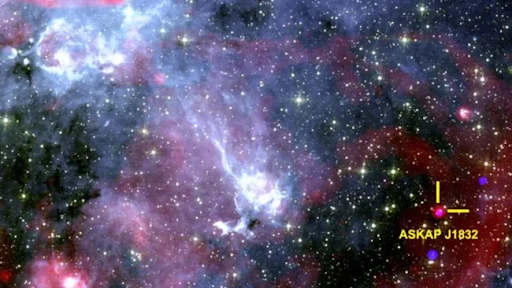Astronomers have discovered a mysterious cosmic object, ASKAP J1832-0911, located about 15,000 light-years away in the Milky Way. This object, classified as a long-period transient (LPT), emits pulses of radio waves and X-rays every 44 minutes, with each burst lasting two minutes. This is the first time an LPT has been observed emitting X-rays alongside radio waves, making it a unique find. Detected using the Australian Square Kilometre Array Pathfinder (ASKAP) and confirmed by NASA’s Chandra X-ray Observatory, the object’s behavior—switching on and off at regular, unusually long intervals—defies current explanations.
Key aspects of the discovery:
- Dual Emissions: ASKAP J1832−0911 flashes in both X-rays and radio waves simultaneously, with two-minute-long pulses occurring every 44 minutes. This correlation is a crucial clue to understanding its nature.
- "Long-Period Transient": Its 44-minute cycle is vastly longer than the milliseconds or seconds seen in typical pulsars (rapidly spinning neutron stars), placing it in the intriguing category of LPTs.
- Fortuitous Discovery: The X-ray emissions were serendipitously detected by NASA's Chandra X-ray Observatory while it was observing the same region of the sky as the Australian Square Kilometre Array Pathfinder (ASKAP) radio telescope, which first spotted the radio signals.
- Uncertain Nature: The exact nature of ASKAP J1832−0911 remains a mystery. Leading theories suggest it could be:
- A magnetar: A neutron star with an incredibly powerful magnetic field. However, some of its properties, like its bright and variable radio emission, are difficult to explain for an older magnetar.
- A binary system: Consisting of two stars, one of which might be a highly magnetized white dwarf (a stellar remnant like our Sun will become).
- New Physics? The unusual and unexplained behavior of this object has led astronomers to suggest it could point to entirely new types of physics or stellar evolution models.
Scientists hope that detecting these objects in both X-rays and radio waves will provide more clues to their mysterious nature and help identify more such objects in the future. The research was published in the journal Nature.

